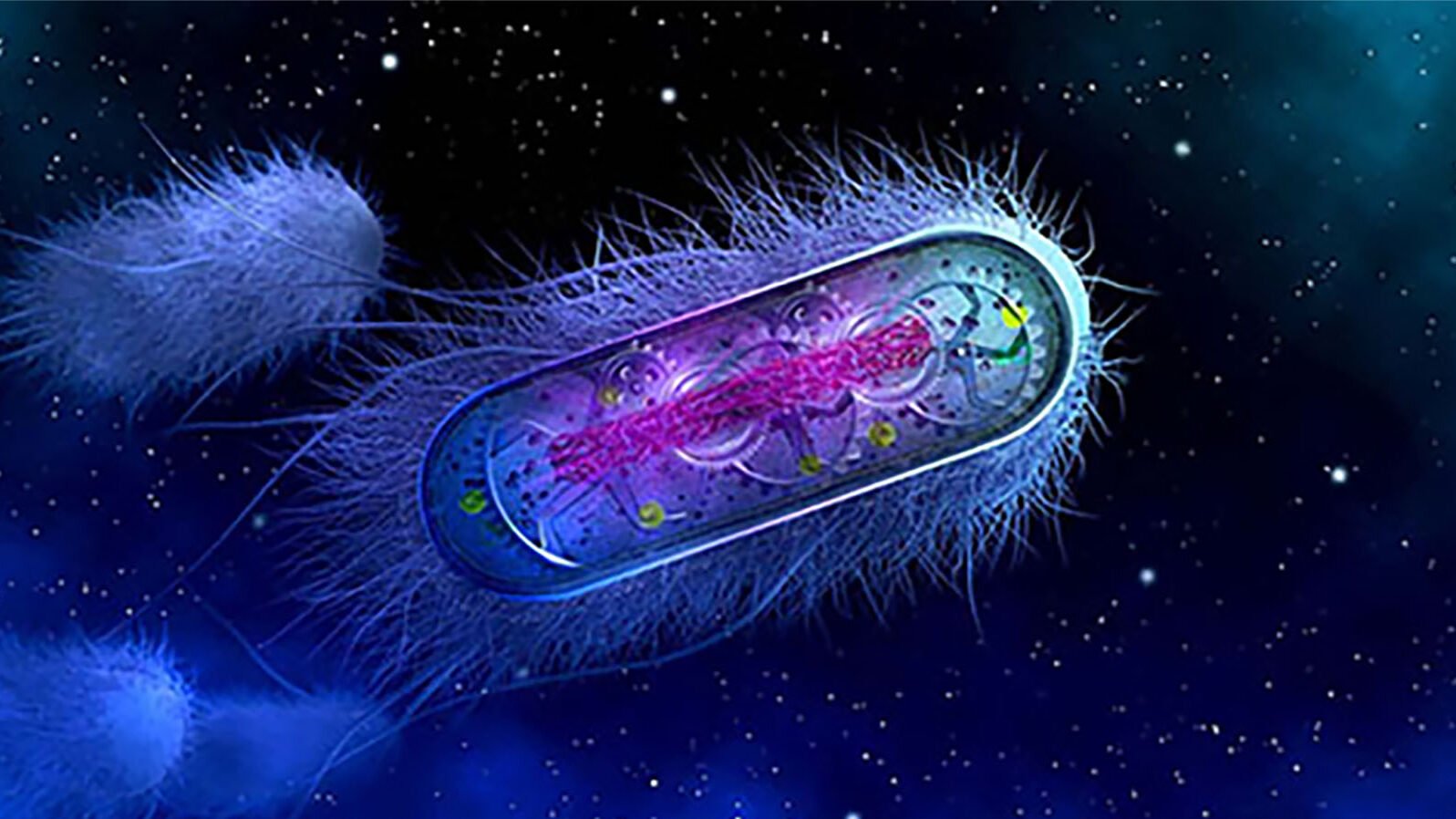
DARPA’s B-SURE program seeks to establish whether bio-manufacturing in space is possible. (DARPA)
WASHINGTON: The Pentagon’s future-oriented research agency has launched a new project designed to suss out whether bio-manufacturing will be possible in space — a capability that could vastly reduce the logistical costs of activities in cislunar space and beyond.
The project is called B-SURE, for Biomanufacturing: Survival, Utility, and Reliability beyond Earth, and “is aiming to answer fundamental questions about the feasibility of using microbes to produce molecules and materials in space,” Anne Cheever, program manager at DARPA, told Breaking Defense.
Some of those materials could be “critical to national security,” explains a Nov. 22 Broad Agency Announcement asking industry for proposals.
The optimal end-game for the Defense Department would be in-space production of things like fuel, batteries and plastics used in 3D printing — helping to reduce reliance on fossil fuels. B-SURE isn’t aimed at actually producing microbes or their by-products in space, but to see if terrestrial microbes already used in bio-manufacturing, such as brewer’s yeast or e-coli, can do their thing in space.
The B-SURE program has three separate research tracks, Cheever explained: What the microbes might be able to “eat” in space or on the surface of the Moon or Mars to allow them to produce useful materials, the affects of micro- or zero-gravity on microbial growth and production, and the affects of radiation.
The effort, she explained, is a very first baby step towards one approach to creating an in-space supply chain for on-orbit manufacturing that would be cheaper and more reliable than launching all the necessary materials. The data from the B-SURE experiments thus will be used to figure out whether bio-manufacturing is not just feasible, but also cost-effective.
“Currently, there’s no space-based manufacturing capability at all,” Cheever said. “So everything that goes for a mission is manufactured on Earth and then shipped to space. … What we’re aiming to do is to reduce that reliance on an Earth-based supply chain.”
On-orbit Manufacturing: Essential To Expanded Space Ops
The Space Force has identified on-orbit manufacturing as a key enabler of its ambitions to expand operations beyond Earth orbit. “There is a critical DoD need for the continued development and future expansion of orbital manufacturing to enable and ensure supply chain resiliency, sustained technological superiority, and asset security and repair for current and future operations,” DARPA’s B-SURE fact sheet explains.
Indeed, Air Force Research Laboratory’s (AFRL) space innovation hub, SpaceWERX, launched in early November a new effort called Orbital Prime, designed to “invigorate the On-orbit Servicing, Assembly, and Manufacturing (OSAM) market,” according to the SpaceWERX website.
The initiative, modeled on the Agility Prime effort by SpaceWERX’s sister organization AFWERX to develop a commercial market for so-called flying cars, is using Small Business Innovation Research, Small Business Technology Transfer and Strategic Funding Increase funding to “drive technology maturation in areas of interest.”
AFRL at the same time announced it had stood up a new laboratory, called Deployable Structures Laboratory (DeSel) at Kirtland AFB, focused on on-orbit manufacturing of nearer-term high-strength materials and satellites structures that can expand the types of missions that small satellites can perform.

DARPA NOM4D project image
DARPA also has launched another OSAM project, Novel Orbital and Moon Manufacturing, Materials and Mass-efficient Design (NOM4D), “to pioneer technologies for adaptive, off-earth manufacturing to produce large space and lunar structures,” according to DARPA’s website.
Cheever said B-SURE and NOM4D are not directly related, in that the latter is focused on traditional materials science. “They’re complementary, but they are fundamentally different approaches.”
Feeding Hungry Microbes
Bio-manufacturing is already widely used on Earth in the production of everything from medicines to foods to industrial solvents.
In fact, DARPA just on Wednesday announced it had successfully wrapped up a related synthetic biology project also managed by Cheever, called Living Foundries, aimed at producing “molecules and material precursors spanning a wide range of defense-relevant applications including industrial chemicals, fuels, coatings, and adhesives.”
The program produced more than 1,630 molecules and materials, according to the announcement, and “is transitioning a subset of these technologies to five military research teams from Army, Navy, and Air Force labs who partnered with the agency on testing and evaluation over the course of the program.”
But terrestrial microbes used in bio-manufacturing by and large are reliant on glucose (i.e. plain old sugar), which of course doesn’t exist in space. Thus, “alternative feedstocks” are required for bio-manufacturing there, Cheever said.
DARPA’s plan isn’t to develop new foods for bioreactors here on Earth, Cheever said. Instead, as the agency’s BAA explains, DARPA wants to see if the bio-bugs can eat “materials on orbit that are currently considered waste materials produced as a result of human activity or local natural resources such as sunlight and regolith.”
Regolith refers to soil from the Moon and Mars. Waste materials, the BAA explains, includes plastic packaging, so-called “grey water” that runs off from human activities such as bathing and household cleaning, and “black water” that includes human excrement. Natural resources might be carbon dioxide and/or sunlight.
Mitigating Gravity And Radiation
Both lack of gravity and unfiltered solar radiation can affect biological processes, as is well known from NASA’s human exploration program and biology experiments on the International Space Station (ISS).
“Microbes evolved on Earth. So they’re all optimized to produce and grow in Earth gravity. And then when you change that, it changes their growth patterns, and potentially their bio-production,” Cheever said. As for radiation, the questions are essentially the same: “how does that affect their their bio-productivity? And then how can we mitigate that?”
The BAA sets out a series of questions for proposals to answer about the affects of “variable gravity,” including “how is fermentation affected and can this be exploited to improve performance or increase molecule production?” Experimentation is to be based on the gravity on the ISS, as well as the surface of the Moon and Mars.
On the issue of radiation, for example, the BAA asks:
- “Can radiation resistance mechanisms and pathways be identified and engineered into production strains?
- How long can a given production strain be expected to maintain genetic integrity in terms of production output when exposed to GCR encountered in a specific radiation condition?
- Can a production strain be expected to remain unmutated for the time required for a production run?”
Cheever said that it has yet to be determined whether one or multiple contract awards will be made under the program, and that the exact budget is not yet fixed.
“We just had our proposers’ day on the 29th,” she said, “and we would expect awards to occur in later summer” next year.
HASC chair backs Air Force plan on space Guard units (Exclusive)
House Armed Services Chairman Mike Rogers tells Breaking Defense that Guard advocates should not “waste their time” lobbying against the move.



























